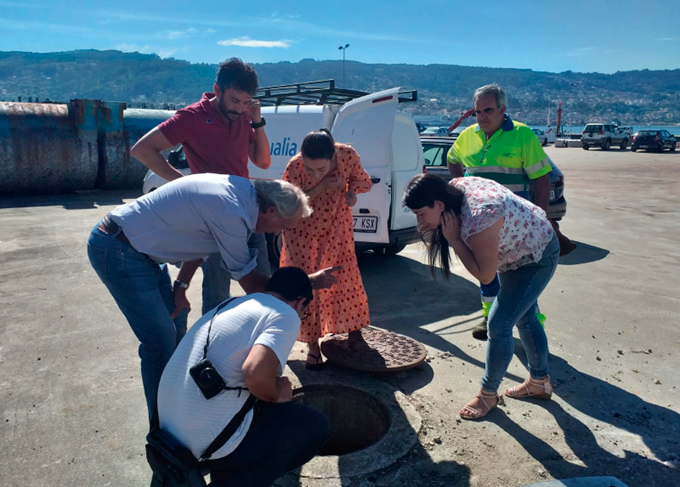
AQUALIA technicians have carried out technical visits along the sewer network of Moaña to specify the type of sensors and their locations.
It is very common for wastewater generated in our cities to be transported together with rainwater through the same conveyance system, constituting what is known as combined sewer networks (CSN). This is the case of the municipality of Moaña, in Pontevedra, where a CSN transports rainwater and wastewater generated in the parishes of Domaio, Meira, Moaña and Tirán. However, the current capacity of the pipelines is not able to cope with the intense and frequent rainfall in the area, causing water overflows into the aquatic environment without sufficient treatment.
Within the framework of the LIFE RESEAU project, the installation of sensors in the sewage system of Moaña is proposed in order to control the frequency with which these discharges occur and monitor their quality. For the purpose of determining the best location for the installation of these sensors and defining their typology and the parameters to be measured, technicians from AQUALIA, together with different suppliers of the devices, have carried out technical visits along the sewer network in the last few weeks.
As a result of the inspections carried out, the technicians have been able to identify the advantages and limitations of the installation in Moaña of the different types of sensors available on the market for wastewater. Thus, it has been decided to implement multiparametric probes in several pumping stations of the sewer network to monitor the quality of the water discharged to the environment by measuring values of physicochemical parameters such as pH, turbidity, suspended solids, temperature, electrical conductivity, or redox. In addition to monitoring the quality of the discharged water, additional devices such as water level and radar sensors will be installed to measure the levels of water flowing through the network and to quantify the discharged flows. Additionally, the location of these devices has been determined after analyzing different factors such as the area of the subcatchments, the height of the terrain or the pipeline connections.
Once the sensors are installed, the measured data will feed the Smart Infiltration/Inflow Management System (SiiMS) that will provide useful information for the reduction of untreated sewer overflows into the aquatic environment.

